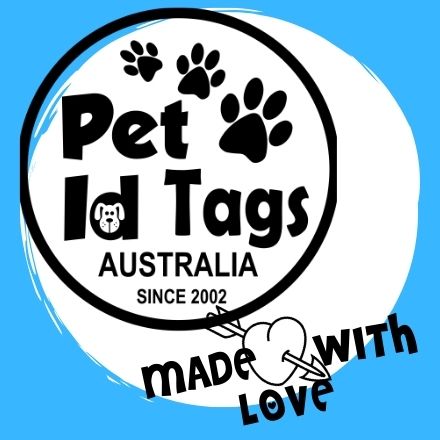What’s the Best Way to Keep Your Pet Safe?
Losing a pet is every owner's worst nightmare. Whether your dog digs under the fence or your cat slips out through an open door, a missing pet can lead to anxiety, heartache, and sometimes tragic outcomes. That’s why identification tools like Pet Tags and microchips are essential. Both serve the same primary purpose—getting your lost pet back home safely—but they function very differently. In this article, we’ll explore the pros and cons of Microchipping vs. Pet ID Tags, and help you decide what’s best for your furry friend.
What Are Pet ID Tags?
A Pet Tag, also known as a Dog Tag, is a small piece of metal or plastic that attaches to your pet’s collar. It typically contains vital information like your pet’s name, your phone number, and sometimes your address. More advanced or modern pet id tags may even include QR codes or be connected to GPS tracking services.
Pros of Pet ID Tags:
-
Immediate visibility: Anyone who finds your pet can read the tag instantly—no special equipment required.
-
Quick return: A good Samaritan can call you directly without having to visit a vet or animal shelter.
-
Inexpensive and customizable: Pet Tags come in many styles, shapes, and materials, and they are relatively cheap.
-
Fashionable: They can also be a fun way to show off your pet’s personality.
Cons of Pet ID Tags:
-
Can fall off: Collars can break or slip off, especially during rough play or if your pet gets caught on something.
-
Wear and tear: Over time, the writing on the Dog Tag may fade, making it unreadable.
-
Limited space: There’s only so much information you can fit on a tag.
What Is Microchipping?
A microchip is a tiny electronic device—about the size of a grain of rice—that is implanted under your pet’s skin, typically between the shoulder blades. It carries a unique identification number that is linked to your contact information in a secure database. To read this number, a special scanner is required, usually available at animal shelters, veterinary clinics, and some police stations.
Pros of Microchipping:
-
Permanent identification: Unlike collars and tags, a microchip cannot fall off or be removed.
-
Lifetime coverage: Most microchips last for the life of your pet and require no maintenance after implantation.
-
International recognition: Microchips are recognized worldwide, which is especially helpful if you travel or relocate.
Cons of Microchipping:
-
Not instantly visible: Someone must take your pet to a vet or shelter to scan the chip.
-
Database maintenance: If your contact info isn’t updated in the microchip registry, the chip becomes useless.
-
Costs more than a tag: Microchipping usually requires a vet visit and is more expensive upfront than a Pet Tag.
Microchipping vs. Pet ID Tags: A Detailed Comparison
| Feature | Pet ID Tags | Microchipping |
|---|---|---|
| Visibility | Immediate | Requires scanning |
| Durability | Can be lost or damaged | Permanent |
| Cost | Low | Higher upfront |
| Maintenance | May need replacement | Requires updated registry info |
| Ease of Use | Very easy | Requires vet to implant |
| Style Options | Customizable & fun | Not visible |
While both methods have their advantages, they also have limitations. That's why experts recommend using both a Dog Tag and a microchip. Together, they provide two layers of protection: one for immediate contact and another as a fail-safe backup.
Real-Life Scenarios: Why You Need Both
Scenario 1: Lost Dog Found in Neighborhood
Imagine your dog runs off during a walk. A neighbor finds him, sees the Dog Tag, calls your number, and you’re reunited in minutes. If your dog wasn’t wearing a Pet Tag, the neighbor might take him to a shelter to be scanned, delaying the reunion.
Scenario 2: Collar Slips Off in a Car Accident
Suppose your cat is in a car during a minor accident. In the chaos, her collar falls off, and she escapes. A kind stranger finds her and takes her to a shelter. The microchip is scanned, and you get the call. Without a chip, you may never know where she ended up.
How to Maximize Your Pet’s Safety
To ensure your pet has the best chance of returning home:
-
Use both a Pet Tag and a microchip.
-
Keep your contact information updated—both on the tag and in the microchip registry.
-
Check the legibility of your Dog Tag regularly. Replace it if it becomes worn or hard to read.
-
Have your pet wear a breakaway collar that’s safe but secure enough to hold the tag.
-
Consider a tag with a QR code or GPS tracker for tech-savvy solutions.
Technological Advancements in Pet ID Tags
Modern pet id tags are evolving. Some now feature:
-
QR codes that link to online pet profiles
-
NFC (Near Field Communication) tags readable by smartphones
-
GPS-enabled tags that provide real-time location tracking
While these innovations are exciting, they should complement—not replace—traditional Dog Tags and microchips. Technology can fail, batteries can die, and not every person who finds a pet will know how to use a smart tag.
Conclusion: It’s Not Microchipping vs. Pet ID Tags—It’s Microchipping and Pet ID Tags
Choosing between a microchip and a Pet Tag shouldn’t be an either/or decision. For maximum safety, your pet should have both. The Pet ID Tag offers immediate, visible identification, while the microchip provides a reliable backup in case the collar or tag is lost. Think of it as a belt-and-suspenders approach to your pet’s security.
Pets are family, and ensuring they have proper identification is one of the most important responsibilities you have as an owner. A small investment in a Dog Tag and microchip today could make all the difference tomorrow.
👉 Ready to shop? Explore our Dog Tags Australia collection




